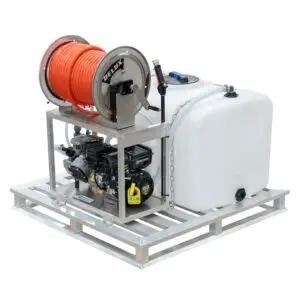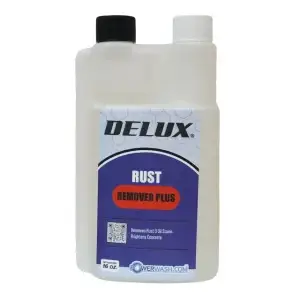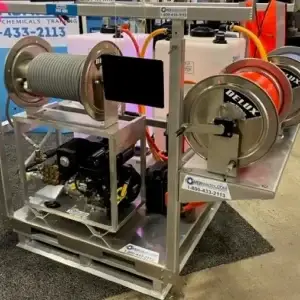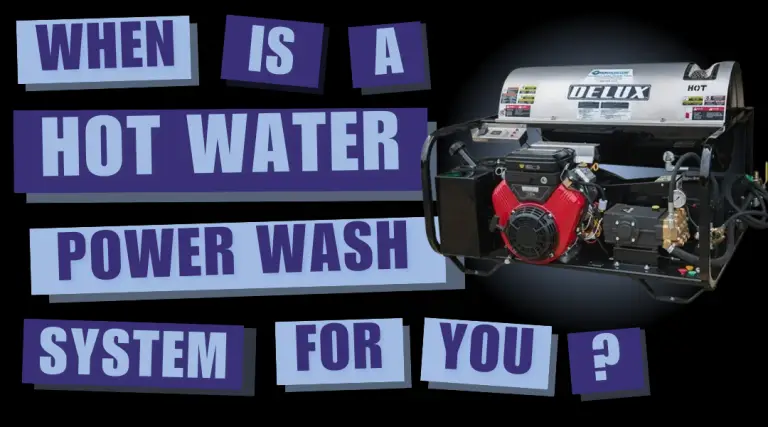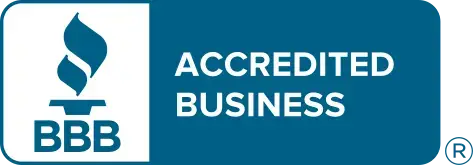- Home
- /
- PowerWash Industry
- /
- Access Doors
Subscribe To Our Newsletter
Stay in the know on the latest products, deals, events, tips & tricks.
Social Media
Popular Products
-
-
All Pressure Washers
100 Gallon Tank Soft Wash Skid – Vanguard Engine, 11 gpm Pump, Aluminum Skid – Stallion Small Truck Batch
$6,629.97 -
Awning Cleaning
Rust Remover Plus Pressure Washing Chemical: Achieve Fast, Professional Results!
$14.47 -
All Pressure Washers
Delux Mustang Pro Mini Complete Skid 4′ – Approved for Drone Use (Surface BOT)
$13,187.90
Access Doors
Access Doors
New Access Doors Offer New Options
In the changing time, of indoor air quality and fire safety in HVAC systems, many local and national codes are becoming stricter and inspectors more cautious on duct cleaners. Many of the changes are in accessing the duct so that cleaning companies can properly clean the system. Old and out dated kitchen exhausts are a problem for cleaners as the old codes did not allow for proper access to the duct system for thorough cleaning. Building owners and inspectors are placing the liability on the cleaners if the entire duct is not clean, making the duct cleaners responsible for installing the access doors in existing systems.
Many local codes follow the guidelines of the NFPA 96 standard that require the access door be made of the same material and thickness of the duct. Access panels shall have a gasket or sealant that is rated for 1500 degrees and shall be grease tight. The NFPA also allows a UL 1978 listed door to be installed in accordance with the terms of the listing and the manufacturer’s instructions. Duct cleaners are looking for an easy alternative to not have to make the doors themselves, and are turning to manufactured doors on the market. There are several UL listed doors that can be used.
Welded doors are common in the construction of new grease duct systems. These doors have a frame that requires welding to the duct. Cleaners, however, usually do not use them because of the fire hazards of welding on grease-laden duct and in ceilings. Code officials sometime require certified welders to do the welding making the cleaners hire an outside firm to install the access doors, which becomes very expensive and a scheduling nightmare. The opening for the access doors need to be cut first and the duct cleaned before the frame is welded on the duct. The down time needed to install the doors requires the owners to shut down for extended periods of time.
Bolt-on access doors are a good alternative for the cleaners and can be installed by their employees. These doors are very labor intensive, as they require the access opening to be cut and up to 16 holes to be drilled to allow for the frame to be bolted to the duct. The wing nuts, which bolt the frame on, have to be removed every time the duct is to be cleaned adding additional time to clean the system.
New to the industry is the sandwich type access door, which is easily installed and requires no holes to be drilled. The door only requires an access opening to be cut and the door to be installed. Once the door is in place the installer only needs to tighten the door with the thumbscrews and center wing nuts. These doors also come with and optional insulation kit so they can be used with the duct wrap insulation and calcium silicate insulation systems. These doors are also being used in new construction. The contractor will fabricate and install the duct, and then the contractor will seek the advice of the cleaners to install the doors so the location of the doors does not interfere with other obstacles in the building.
In addition to the sandwich type doors, Ductmate developed a circular type door, which allows a round hole to be cur into the duct so the cleaner can attach hoses with the same diameter to the round opening. The opening then can be easily sealed with the round sandwich access door. At the request of an IKECA member, Ductmate Industries was asked to develop an access door that was fast and easy to install and that would pass the UL 1978 standard. Approved in February 2001, the ULtimate door consists of two 11-gauge panels, two center studs with wing nuts and four outer thumbscrews. Cutting a rectangle opening in the duct and sliding the door into the duct opening easily install the door. Once the door is in place, the installer only needs to tighten the door with the thumbscrews and center wing nuts.
Kitchen exhaust cleaners can add an extra service to the building owner by installing the doors as he cleans the duct to bring the existing duct up to the newest safety standards. Also by working with the contractors on new construction the cleaners can place the doors in locations that can be readily accessible and still stay in compliance with local code.
(Plan to visit the Ductmate Industries display at the IKEA Fall Technical Seminar for additional information on access doors and accessories.)
This article appeared in the Summer 2001 IKECA Journal.
Written by Alan Shuey, Design Engineer, Ductmate Industries
Share This Post
More To Explore
Tax Benefits For Power Washing Professionals
Navigating the complexities of tax planning can be a daunting task for power washing professionals, yet it’s a crucial aspect …
Top 5 Must-Have Attachments to Elevate Your Power Washing Efficiency and Precision
Attachments for power washing systems are essential tools that significantly enhance the effectiveness, speed, and precision of professional cleaning jobs. …
When Should You Get A Hot Water Power Wash Machine?
When a Hot Water Power Washing System is Your Best Choice When deciding between a hot water power washing machine …
The Science Behing Power Washing
The Science Behind Effective Power Washing The science behind power washing is a balance of pressure, water, and chemical solutions …




